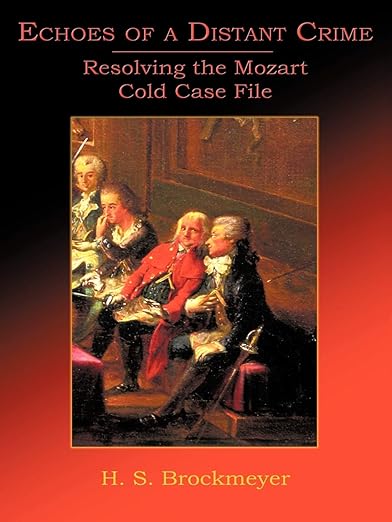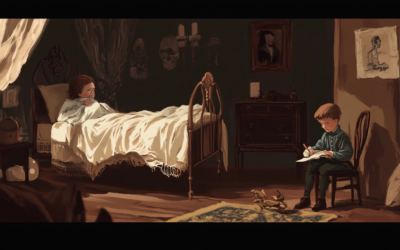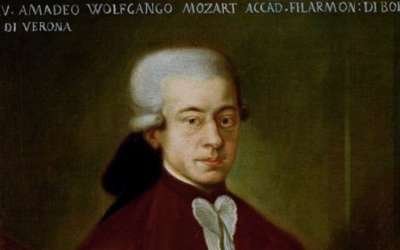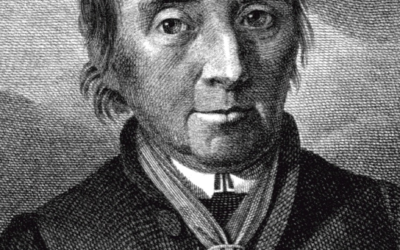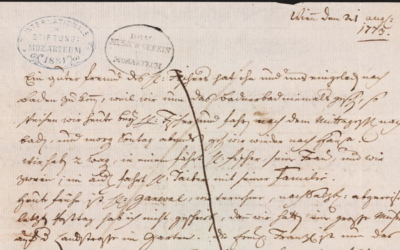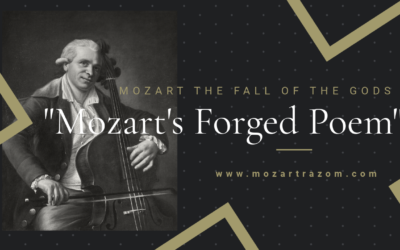Constanze Mozart’s Enduring Love
Myths, Misconceptions, and Mysterious Graves
Although some have doubted her devotion, Constanze’s own words and actions illustrate a widow deeply committed to preserving Mozart’s legacy. Diaries, personal correspondence, and eyewitness testimony all challenge the notion that she neglected his memory—while the circumstances around his burial grow ever more perplexing.
“He was of so sweet a disposition altogether that it was impossible to argue with him…”
Constanze
In H. S. Brockmeyer’s latest analysis, the widely debated affection of Constanze Mozart for her first husband, Wolfgang Amadeus Mozart, is re-examined through letters, visitors’ accounts, and a host of little-known historical records. Critics have often accused Constanze of neglecting Mozart’s memory by failing to erect a proper headstone for him, yet, as Brockmeyer highlights, her day-to-day actions speak volumes about her loyalty and her heartbreak.
Constanze’s diary entry of 11 August 1829, lovingly referencing Mozart’s fortepiano—where he reportedly composed the Zauberflöte, La Clemenza di Tito, the Requiem, and a Freemason Cantata—demonstrates her lifelong attachment. Despite the hardships and misunderstandings in their marriage, she cherished this instrument, eventually sending it to her eldest son, Karl. Moreover, she traveled with a treasured painting of Mozart, by her brother-in-law Joseph Lange, safeguarded in a custom-made wooden case. The English musician and publisher Vincent Novello, along with his wife Mary, visited Constanze in 1829 and confirmed her unwavering devotion. As Mary wrote in her journal, Constanze proudly displayed the painting, the famous inkstand permanently stained with Mozart’s ink, and even locks of his hair—a sentimental gesture that leaves little doubt about her profound feelings.
One of the many overlooked details, Brockmeyer points out, is the monumental gravestone currently crowning the final resting place of Constanze’s second husband, Georg Nissen, in Salzburg’s St. Sebastian Church cemetery. Today, the name MOZART gleams in gold on that shared stone, an homage to Constanze’s first husband that endures for centuries—an act entirely consistent with a woman who would not allow her beloved to be forgotten. Yet the research also calls attention to the contradictions regarding Leopold Mozart’s grave, which ended up in a communal burial site rather than near the grand Nissen headstone. The confusion, incomplete records, and repeated renovations contribute to a sense of unresolved mystery surrounding the family’s final resting places.
In parallel, the controversy about Mozart’s alleged grave at St. Marx in Vienna adds an extra dimension of intrigue. Scholars, tourists, and enthusiasts have paid homage to a cenotaph believed to mark the spot where Mozart might lie, but the revelations unearthed by H. S. Brockmeyer indicate that there is no definitive proof of the composer’s remains in that location. In fact, subsequent attempts to verify whether bones found in Salzburg could be those of Mozart or his relatives—particularly the 2004 and 2005 forensic investigations—ended with inconclusive DNA results. The same is true of the famed skull, purported to be Mozart’s, which has yet to be verified scientifically and remains in the care of the Mozarteum Foundation.
Particularly fascinating are the shadowy details surrounding Mozart’s final days: the contradictions in eyewitness testimony about who visited him, the confusion regarding a simple or third-class funeral, and the complete lack of the grand commemorations that one might expect for a composer whose music so electrified Vienna. By contrast, the city of Prague honored Mozart with an elaborate memorial service on 14 December 1791, while Vienna seemingly carried on without public ceremonies—an oversight that continues to puzzle historians.
Brockmeyer also introduces an astonishing story that places Mozart’s corpse in the Freihaus Theater of his friend and collaborator Emanuel Schikaneder, who staged The Magic Flute. An eyewitness account suggests that the composer’s body was briefly laid out there, although official records remain silent on the matter. This bizarre episode dovetails with the enduring rumor that Mozart’s physical remains simply vanished from public sight. According to local anecdotes, neither the Church nor the authorities possessed clear or consistent documentation as to where or how he was buried.
By interweaving testimony from Constanze, Sophie Haibl (Constanze’s sister), the Novellos, and forensic experts centuries later, Brockmeyer paints a picture of a widow doing all in her power to safeguard the memory of “her inexpressibly beloved husband,” in the face of church procedures, royal edicts, and myriad forces beyond her control. This first installment of H. S. Brockmeyer’s comprehensive study peels back layer after layer of myth and speculation—revealing a steadfast love that contradicts long-held assumptions about Constanze’s indifference.
Stay tuned for Part II, in which H. S. Brockmeyer delves even further into the convoluted archives, possible political and ecclesiastical motivations, and the broader historical context that shaped Mozart’s fate and legacy. How did Austria’s Catholic Church and the imperial authorities handle such a high-profile death? And why were so many of Vienna’s influential Freemason brothers conspicuously silent at Mozart’s funeral? The journey into this enigma continues.
You May Also Like
#2 The Hidden Truth of Mozart’s Education
In this video, we uncover the hidden truth behind Wolfgang Amadeus Mozart’s early education and challenge the long-held belief in his effortless genius. While history often celebrates Mozart as a child prodigy, effortlessly composing music from a young age, the reality is far more complex.
The London Notebook
The London Notebook exposes the limitations of young Mozart’s compositional skills and questions the myth of his early genius. His simplistic pieces, fraught with errors, reveal a child still grappling with fundamental musical concepts.
The Mozart Question
In this revealing interview, we delve into the lesser-known aspects of Wolfgang Amadeus Mozart’s life, challenging the long-standing myth of his genius. A Swedish journalist explores how Mozart’s legacy has been shaped and manipulated over time, shedding light on the crucial role played by his father, Leopold, in crafting the career of the famed composer.
Georg Nissen and the Missing Notebooks
After Mozart's death, his widow, Constanze, found a steadfast partner in Georg Nikolaus von Nissen, a Danish diplomat who dedicated his life to preserving the composer's legacy. Nissen not only compiled an extensive biography of Mozart but also uncovered and...
Letters Under Surveillance
In a world without privacy, Leopold Mozart’s letters were carefully crafted not just to inform but to manipulate perceptions. His correspondence reveals a calculated effort to elevate his family’s status while avoiding any mention of failure or controversy.
#3 Leopold Mozart’s Literary Theft
Hidden within the Mozarteum’s archives lies a poem that has long been hailed as a tribute to the young Mozart children. But behind this innocent façade is a story of deception, literary theft, and one father’s ambition to rewrite history.

